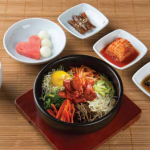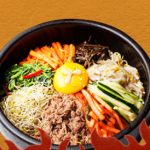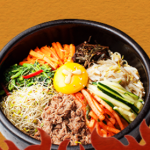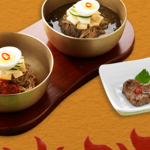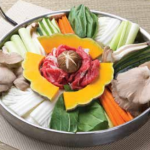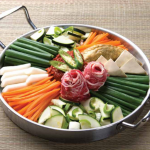Korean cuisine is a feast for the senses, with its vibrant colors, tantalizing aromas, and bold flavors. From sizzling barbecues to savory stews, every dish brings a unique twist to the dining experience. Have you ever wondered what makes Korean food so irresistibly delicious? Let’s embark on a culinary adventure while we uncover the key ingredients that make Korean cuisine truly remarkable.
Introduction
Korean cuisine is renowned for its intricate use of spices and seasonings, resulting in vibrant and flavorful dishes. The combination of various ingredients creates a harmonious balance between sweet, sour, spicy, and savory tastes. With traditional intricacy and a touch of modern artistry, Korean dishes offer an experience unlike any other.
Exploring the Key Ingredients
1. Gochujang: The Fiery Heart of Korean Cuisine
Gochujang, a fermented chili paste, is a staple ingredient in Korean cooking. Made from chili peppers, glutinous rice, and fermented soybeans, it adds a complex and spicy kick to various dishes. Its versatility makes it an essential ingredient in iconic Korean classics like bibimbap, tteokbokki, and bulgogi.
2. Sesame Oil: The Nutty Elixir
Sesame oil, derived from roasted sesame seeds, is another fundamental ingredient in Korean cuisine. It delivers a rich and nutty flavor while enhancing the overall aroma of the dish. A few drops of this fragrant oil can transform a simple vegetable stir-fry or a bowl of noodles into a culinary masterpiece.
3. Kimchi: The Iconic Fermented Side Dish
No exploration of Korean cuisine would be complete without mentioning kimchi. This traditional side dish is made by fermenting cabbage or radish with a combination of seasonings, including chili powder, garlic, ginger, and fish sauce. The result is a spicy, tangy, and slightly effervescent delicacy that accompanies virtually every Korean meal.
4. Ganjang and Gukganjang: The Essence of Umami
Soy sauce, known as ganjang in Korean, is a fundamental ingredient that enriches the savory flavors of Korean cuisine. It is crafted through a delicate fermentation process involving soybeans, brine, and sometimes wheat. Gukganjang, a lighter and saltier variation, is used for soups and stews, while regular ganjang adds a distinct umami taste to dishes such as jjajangmyeon and japchae.
5. Doenjang: The Soul of Korean Stews
Doenjang, a traditional fermented soybean paste, is the secret ingredient behind the rich and hearty flavors of Korean stews. Its pungent and earthy taste adds depth to dishes like doenjang jjigae, a comforting soybean stew brimming with vegetables and meat. This versatile ingredient is an essential element of Korean cuisine.
Conclusion
The key ingredients mentioned above are just a few examples of the culinary treasures found within Korean cuisine. The intricate balance of flavors in Korean dishes is achieved through the artful combination of ingredients and the careful preparation techniques handed down through generations. By embracing these ingredients, you can embark on an extraordinary gastronomic journey and bring the authentic taste of Korea to your own kitchen.
FAQ Section
1. Where can I find the key ingredients for Korean cooking?
You can find key ingredients like gochujang, sesame oil, and soy sauce in most Asian grocery stores or online markets that offer international food products. Some general supermarkets also stock Korean ingredients in their international sections.
2. Are there any vegetarian or vegan alternatives for Korean dishes?
Absolutely! Korean cuisine offers a variety of vegetarian and vegan dishes. Many traditional Korean side dishes like kimchi are already vegetarian-friendly. Additionally, you can substitute meat with tofu or use vegetable broth instead of the traditional beef broth in stews and soups.
3. Are Korean dishes usually spicy?
Korean cuisine does have a reputation for being spicy, but not all dishes are burning hot. Korean food embraces a wide range of flavors, including mildly spicy, savory, sweet, and sour. Some dishes, like bibimbap and bulgogi, are not inherently spicy and can be enjoyed by those with a milder palate.
4. Can I adjust the spiciness level of Korean dishes to suit my taste?
Absolutely! Korean cuisine is highly customizable. You can easily adjust the spiciness by reducing or omitting the amount of gochujang or other hot spices in the recipe. Don’t be afraid to experiment and find the perfect balance that suits your preference.
5. Are there any simple Korean dishes I can start with as a beginner?
Certainly! Some beginner-friendly Korean dishes include bibimbap, kimchi fried rice, and japchae (stir-fried glass noodles). These dishes are relatively easy to make and provide a great introduction to the vibrant flavors of Korean cuisine. There are plenty of online recipes and instructional videos available to help you get started.

